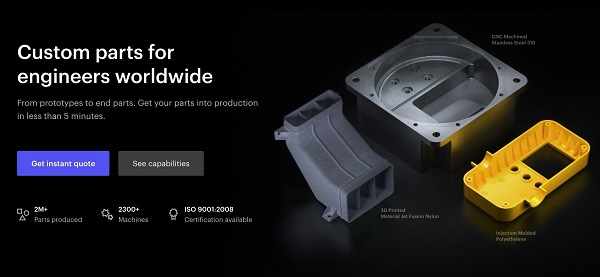#endorsed
3D printing and CNC machining are both used heavily in the manufacturing industry today, and for good reason. While the two have different manufacturing processes, both have many advantages over traditional machining methods. 3D printers use a process called additive manufacturing, which adds material one layer at a time until the product is complete. CNC machining uses a process called subtractive manufacturing. The subtractive manufacturing process starts with a chunk of material and cuts it until the product is made. 3D printers and CNC machines are used in just about every step of the manufacturing process, from making prototypes to producing a final product.
CNC or 3D Printing
Choosing to make a prototype with a CNC machine or 3D printer depends on a few things; the price range, the size of the part/prototype, and the type of materials used.
Price Range
When it comes to cost 3D printers are generally the better option. This is due to the 3D printer material being cheaper than the material used for CNC machines. 3D printer material is usually sold on a spindle whereas the material used in a CNC machine is a large slab of the material. Also, the additive manufacturing process 3D printers use is more conservative than the subtractive process used in CNC machines. Subtractive manufacturing often has material left over afterwards, and sometimes that material can’t be reused. Additive manufacturing on the other hand only uses the exact amount of material needed to make the product. There is no leftover product to cleanup and whatever amount of product that wasn’t used can be used to make the next product.
Size and Shape
The size and shape of the prototype or part determines a lot of times whether a 3D printer or CNC machine is used. Larger parts are generally made with a CNC machine while smaller prototype are 3D printed. There are a few exceptions. One major advantage of 3D printers is the freedom to make just about any shape. Therefore, parts with high geometric complexity are usually 3D printed, as CNC machines have trouble with these, due to the subtractive manufacturing process it uses.
Type of Materials
While both 3D printers and CNC machines are compatible with a variety of materials, 3D printers are widely known for plastics, whereas CNC machines are commonly used with metals. CNC machines are used more with metals because there are several tools involved such as drills and lathes that can cut through metals with ease. There are 3D printers that can print metal, but they are niche. 3D printers that can print with metals are expensive and are generally more pricey than many CNC machines. That being said, several materials such as superalloys or TPU can only be created with 3D printers, hence as to why 3D printers are more associated with plastics.
What if higher part quantities are needed?
From a mass production standpoint, neither 3D printing of CNC Machining are recommended. Neither are cost-effective over the long run. Also, CNC machines require a skilled operator to watch over. While a lot of machining can be done on its own, CNC machines have different properties such as choosing the cutting path and rotation speeds of tools that only a trained operator would know how to setup. Traditional forming technologies, such as injection molding, are generally the most economic option, due to mechanisms of economies of scale.
How To Get Your Parts Fast
When you’ve decided that 3D printing or CNC machining (or Injection Molding) is the right technology for you, a manufacturing platform can help you get your parts fast and hassle-free. 3D Hubs is a custom 3D printing service, CNC machining service, and injection molding service all in one. They have been in business since 2013 and have made and shipped over 3 million parts worldwide. On the front page of their website, you can choose from their CNC Machining service, 3D printing service, or injection molding service. From there, you upload a CAD drawing and from there not only will you receive a CNC quote for the parts, but their Design for Manufacturing (DfM) program will detect any problems and recommend what should be changed before ordering. Parts generally take 5 to 15 days to make and ship. Make sure to visit their website for more info.












